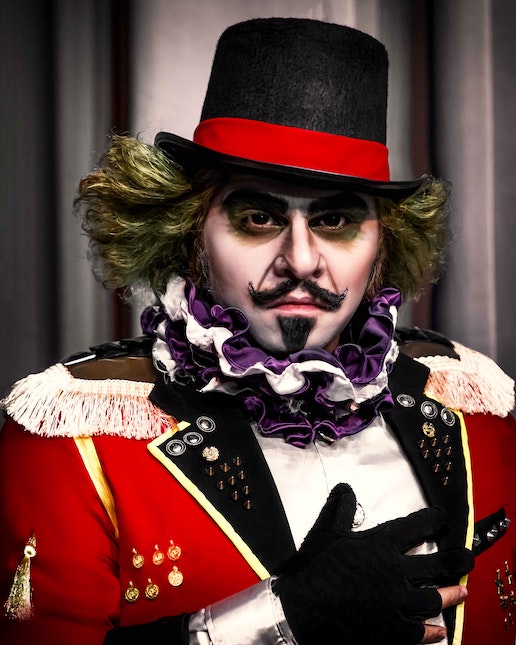Mystery Novel Opening: Take Charge as the Ringmaster of Your Story with a Striking Beginning

You are the Ringmaster of Your Story
When you were little and went to the circus, remember the anticipation you felt waiting in the crowd for the circus to begin? Then the ringmaster came out in a spotlight. In a resonant voice, he welcomed the crowd. “Ladies and gentlemen, boys and girls, welcome to the circus.” And, at last, the circus began. You filled with anticipation for what would come next.
That’s how you want your reader to feel when they read your novel opening. The opening is the welcome, promising all the exciting acts that will follow.
When readers begin your story, they want to know certain elements, and very soon. Gone are the days when the scenic, lingering beginning of Thomas Hardy’s The Return of the Native will draw in a reader. In modern preference, readers want to know the genre, the protagonist, and the story right away.
New authors may struggle with introducing required story elements without getting to the story.
The Pitfalls of the Beginning
In the first few pages of your novel, you need to get the reader into the story.In a recent article, literary agent Peter Miller described his pet peeve in opening pages of a novel:
I enjoy when writers can find a balance between exposition and mystery. Too much accounting always ruins the mystery of a novel, and the unknown is what propels us to read further.
Peter Miller, PMA Literary and Film Management
Writers need to find the balance between the “accounting” and the initial intrigue that makes the reader wonder what will happen next.
In order to get your reader to keep reading, get them to care about the character and their story dilemma. Readers want a sense that this is only the beginning. How is it going to get worse?
How the Beginning Can Go Wrong
I began reading a “suspenseful spy thriller.” Chapter One comprised a finely detailed conversation “introducing” the main character in his everyday world but without one iota of suspense. The chapter was filled with finely detailed descriptions of the setting, the protagonist’s appearance including down-to-the-buttons attire description, tools used with experience, and backstory about a family member. I wondered if this was a romance presented in the guise of a thriller. If it had been billed that way, I would not have purchased the book, much less started reading. OK, I’ll give the author a break. Maybe the story starts in the next chapter.
Nope! Chapter Two presented the “save the cat” details of the protagonist caring for an ailing family member and a long description of a native talent built to professional standards. Now I was curious: when does the story start?
Finally, in Chapter 3, the intrigue starts. The author had already lost me. My curiosity drove me to find where the story started, but I had lost interest in the story. I stopped reading.
I stopped because there was a lot of “accounting” but no mystery. Right away you want your reader to ask questions, especially the question, “What will happen next?”
I am certain that the author of the spy thriller believed she had met story essentials by portraying the protagonist’s normal life, showing that he was empathetic, and illustrating his unique talent. In doing so, she left the story behind.
Start in The Story
However talented your protagonist is, don’t tell the reader. Show your protagonist in action right from the beginning. Open with a scene that illustrates how your protagonist sleuth works. Dialogue shows how they think. Action shows how they operate.
When you begin in the story, your reader will work out your protagonist’s strengths by experiencing them in action. Action is so much better than description.
Tips to Open Your Novel
Take your reader into the story. Just like the circus ringmaster, welcome them by showing them they are already at the circus. Don’t make your reader wait for the story to start.
Give them an idea of all the elements that will happen later in the story.
Story Opening Stumbling Blocks
The best way to start your story is to jump right in. Just like the ringmaster, you are introducing your reader to what will follow. Step into the spotlight and begin.
Here are some elements to consider:
- The tone of the narrative immediately. Reassure the reader that the genre you promised is what is in the story. Don’t start funny and then be dark and mysterious for the rest of the novel.
- Minimize descriptive details at the beginning—no laundry lists of features either of the protagonist or the setting. Sprinkle details as the story progresses. Get to the action and do it now. You’ll incite your reader to want to read the story.
- A gratuitous hook that is there just for excitement but is not part of the story–often a sex scene or a big fight. This is a trick. It’s like a switch-and-bait sales pitch. Get to the story. Show your reader the tone now, not later.
- Backstory – the protagonist thinking or dreaming about what happened before. Backstory beginnings are just plain boring. You want your reader in the story.
- Adjective and adverb heavy sentences. Use verbs and more verbs.
Get your reader into the story. Show your protagonist in action. You aren’t at the inciting incident yet. This is your opportunity to illustrate how your protagonist deals with the world—the people and setting.
Start the Story
Today’s readers want a good story. Your beginning sets up your reader for the rest of the story. Lose them at the beginning and you won’t get them back. Your goal at the beginning is to get the readers involved in the story.
No matter how many books you read or formulas you consider for writing a story, at the beginning, engage your reader. Reassure them that the story you promised feels like the genre they want, gets your protagonist in action right away, and delivers a dilemma that keeps them reading for more.
Be the ringmaster, announce the excitement ahead.
Photo by saeed karimi on Unsplash

